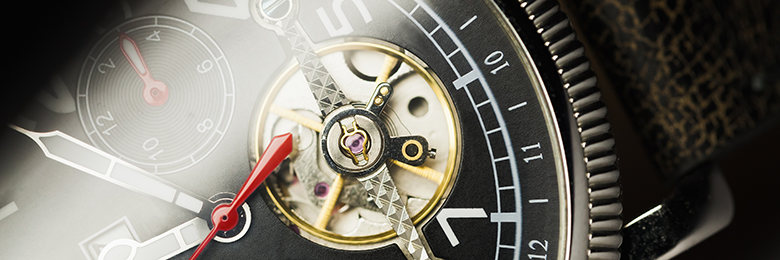Timely Advice: Are Your Watches Protected?

In November 2019, a Patek Philippe “Grandmaster” watch fetched $31 million at Christie’s Geneva. This result was more than 10 times the pre-sale estimate, establishing a new world record for a timepiece at auction. It smashed the previous record for a wristwatch, set in 2017, when Phillips sold a Rolex Daytona owned by Paul Newman for $17.8 million. It also eclipsed the timepiece auction record of $24 million, set in 2014 by Sotheby’s Geneva for the 1932 Patek Philippe “Henry Graves Supercomplication” pocket watch.
With two reversible dials, five chiming modes, and 20 other special functions, the Grandmaster may not be the watch your clients gave (or received) this holiday season, but the auction results illustrate how the watch market continues to trend upward for the best items.
As an asset class, watches currently outperform other traditional collecting categories, yet by insurance industry standards, they are among the most frequently overlooked. A typical homeowners’ insurance policy is not designed to provide adequate coverage for a collection of valuables, but many assume they’re protected. Furthermore, to preserve long-term value, luxury timepieces are complex machines that demand the same care and attention as a finely tuned Ferrari.
Passionate watch owners may take great care in building their collections, but even the most well-intentioned can suffer losses. Watches are often stolen or misplaced; watch faces are accidentally cracked; and collections can be destroyed by fires and floods. Obtaining appropriate insurance coverage and adhering to the following advice will go a long way toward recovering from these scenarios or avoiding them entirely, ensuring the aesthetics and value of timepieces will endure for years to come.
Valuation and Documentation
- Maintain an updated, detailed list of the collection, ideally with photographs and serial numbers, with a copy stored off-site or in the cloud.
- Ensure that watches are adequately valued, particularly in a volatile market. Look to independent appraisers, retailers and auction houses as resources.
Specialized Insurance Coverage
- A typical homeowners policy limits coverage for jewelry, including watches. In many cases the value of a single expensive watch exceeds those limits. Transition to a policy designed for collections or valuables for broader protection, often without being subject to a deductible.
- Consult an independent insurance advisor experienced with sourcing coverage for valuables. In addition to accessing specialty insurance providers, he or she will likely have a deeper understanding of the risks and circumstances that can accompany substantial wealth.
Best Practices for Preservation
At Home
- Store valuable watches in a safe that is bolted into the structure of the home, so it cannot be removed and broken into later.
- If stored outside of a safe, keep watches hidden in a difficult-to-find location; avoid drawers and closets.
- Store watches in original boxes or watch cases to ensure they are not scratched by contact.
- When visitors or contractors are in the home, keep watches out of site to minimize the chance of theft.
- Remove watches before bathing. Soapy water can corrode the gaskets that enable water resistance.
When Traveling
- Never leave watches in a checked bag. Unworn watches should be protected in a padded jewelry portfolio or watch box.
- Beware of potential theft of carry-on bags in overhead compartments. If possible, keep additional watches separately in a pants or jacket pocket.
- When staying in a hotel, store unworn watches in the hotel safe or a safe deposit box.
- Wear watches discreetly in foreign countries, where thieves can recognize valuable articles.
- Only ship valuable watches via specialized jewelry shippers, not standard overnight services. To avoid shipping risks, try to identify local resources for repairs, maintenance and appraisals.
- Chlorine and saltwater can damage metals, so remove watches before swimming. If a watch must be worn in the water, ensure it is water resistant. To prevent seepage, ensure the crown is pushed in or screwed down and do not adjust the crown or press buttons once submerged. After contact with chlorinated or salt water, rinse the watch in fresh clean water.
- Avoid extreme temperature changes and humid environments like showers, hot tubs and saunas.
- Also avoid prolonged exposure to sunlight, as it can potentially dry the movement’s lubrication.
- Do not wear a watch near equipment with strong magnetic fields, such as speakers, laptops, tablets, mobile phones and metal detectors.
- Unless the watch was designed for it, avoid violent shocks and activities that require repetitive motion, such as golf or tennis.
- Avoid wearing watches alongside metal bracelets to prevent scratching.
Additional Recommendations
- When initially used, automatic watches should be wound with only a few turns of the winding crown.
- Wind watches with manual mechanical movements only once daily, at the same time, without over-winding. Stop winding as soon as resistance is felt.
- To keep movements properly lubricated, wear mechanical watches at least once per month (if not worn more frequently).
- Don’t store automatic watches on electronic winders for prolonged periods of time. Keeping a watch constantly running increases wear and accelerates service intervals.
- Keep watches working optimally with a complete movement overhaul every three to five years. New watches may need earlier maintenance to preserve the manufacturer's warranty.
- Watches that stop keeping time, or which run too slowly or too fast by one minute per day or more, likely need servicing.
- Check for water resistance regularly. Condensation under the crystal or an oxidized dial are signs to have your watch repaired professionally immediately.
- When servicing a vintage or luxury watch, request that the case and bracelet be kept as is; not to be refinished or polished. Likewise, request no parts be replaced, especially the dial and hands, unless necessary.
- Wash metal bands with a soft brush and warm, soapy water. Rinse with warm, clean water before drying. Do not get leather straps wet.
- Clean regularly worn watches every few months with a soft, dry cloth to remove debris and chemicals. Avoid wrist contact with products such as cosmetics, detergents, moisturizers and perfumes, which can damage a watch's function and finish.
- Preserve all original documentation for your watch, including the original box and guarantee.
- If a watch has a quartz movement, remove and/or replace worn batteries every three years or sooner.
Understanding the unique risks associated with owning watches, and acting to prevent loss or damage, will prolong enjoyment and maximize financial worth. When valuable items also have sentimental value, it is doubly important to make the “time” for preservation.
~~~
 Rand Silver, Global Director, Art Collection Management, AIG Private Client Group
Rand Silver, Global Director, Art Collection Management, AIG Private Client Group

Rand oversees all aspects of risk management for AIG’s insurance portfolio of art, jewelry, and wine. Working with a team of seasoned professionals, he provides collections related loss prevention services to policyholders, ensures that high-valued claims are handled seamlessly, and implements disaster mitigation and response initiatives.